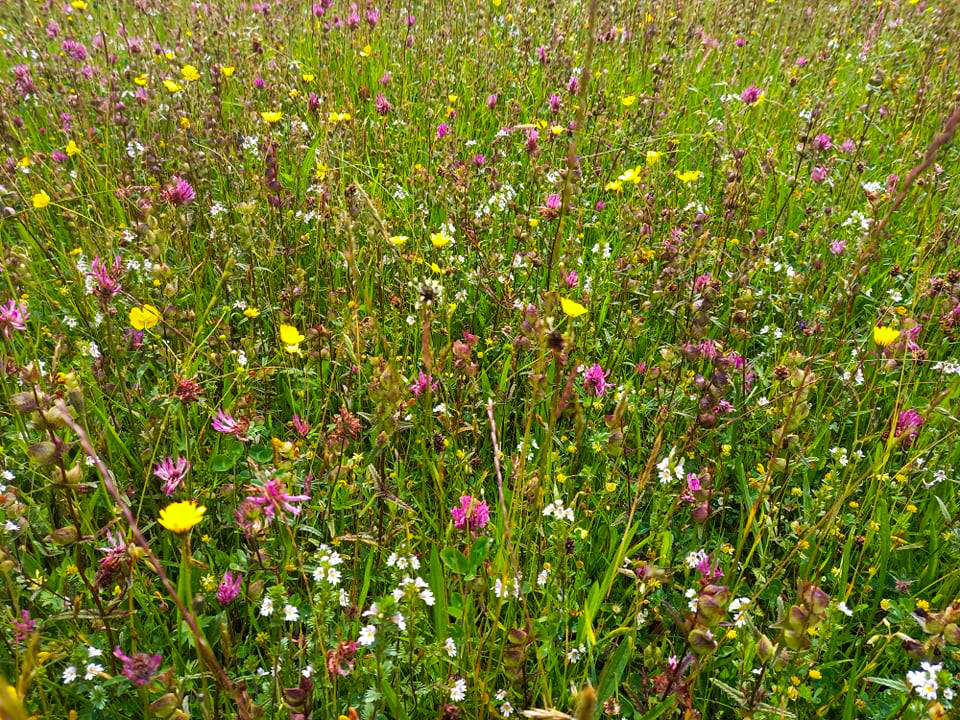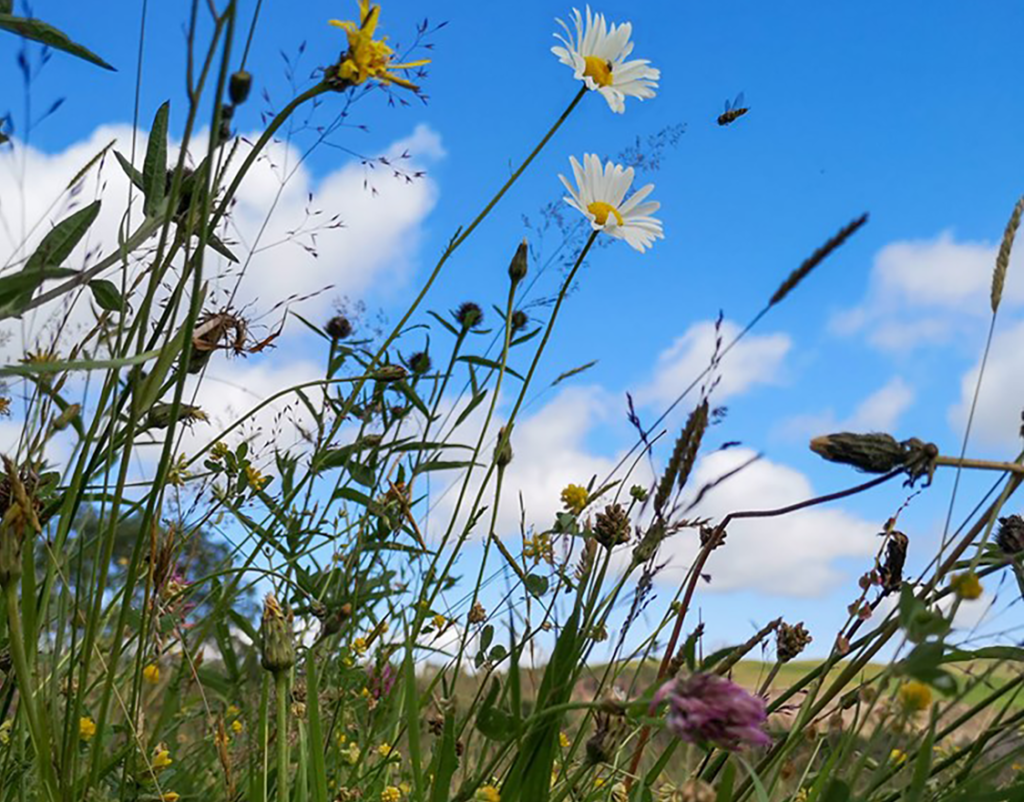
Elan Hay Meadows Update
Elan’s ‘upland fringe’ hay meadows are unique in Wales. They are here because of traditional farming in the valley over hundreds of years and because of the reservoirs and the need for clean water. Fertiliser and pesticide use on the farms is either non-existent or minimal.
Wood bitter-vetch, great burnet, mountain pansy, greater-butterfly orchid and small white-orchid are some of the rare and uncommon species that can be found in these lovely meadows.
Throughout the five years of the Elan Links Hay Meadow Project we have been surveying vegetation and also soil sampling, collecting evidence to enable better management of the meadows. After careful consideration Natural Resources Wales consented to light applications of lime in specific meadows and others have had light applications of farmyard manure. The aim is to achieve better productivity of the meadows so that there is plentiful hay for winter feed but not to compromise the meadows’ species-richness or harm the rarities in these grasslands.
We commissioned Jan Sherry and Emma Douglas from PONT to carry out a huge survey last year with money from the Nature Networks Fund and were able to survey virtually every meadow and enclosed pasture in the valley. The resulting report gave farms long lists of what grew in each of their fields along with helpful management advice. In November 2022 Emma Williams carried out waxcap and earth tongue surveys in some pastures and will continue her search this autumn. Emma, with help from Sorcha Lewis (and Ray Woods) has been thrilled by her finds which have included rarities like Date Waxcap. Elan is definitely on the map for fungi!
For the last two years we have run hay meadow management events on farms and last year demonstrated a meadow seed harvester which we bought with HLF funds. We also gave farms our little guide to Elan’s Meadow Flowers which was hot-off-the-press that day. This year we will hold an event to look at how the In-bye Survey 2022 is informing management going forward which includes bracken control and meadow monitoring.
We are really pleased to have Janice Vincett with us this season to survey the most flower-rich meadows of the in-by land for pollinators. Janice is a specialist in ‘Hymenoptera’, the bees and wasps and was once a ranger in the valley. What she finds will build on all of the work we have done to make sure that Elan’s meadows continue to be valued in the future.
Fiona Gomersall
Image by Martin Jones
